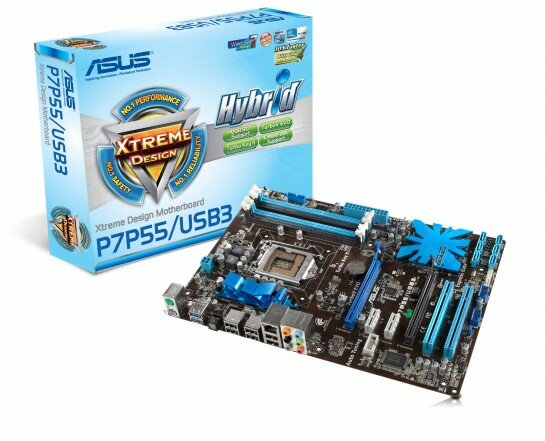As one of the first companies to launch a USB 3 motherboard last year and with performance and power innovations like the EPU and TPU, it’s hardly surprising to find ASUS at the forefront of another technology curve.
More PC chassis are having USB 3 built into the front of their cases to make them easier to use, because plugging something in an arms length away is much preferred over diving around the back to fidget around in the dark and spider-web covered behinds of your PC.
Unfortunately the cases use standard USB 3 plugs to re-route the cables to the front of the case – this is not only ugly, it removes the benefit of keeping some permanently attached cables at the back, out the way.
ASUS has therefore stepped up to create an internal header on its latest P7P55/USB3 motherboard with an extra USB 3 chip so users don’t have to sacrifice any rear ports and they get an extra couple of USB 3 connectors too. This also makes the P7P55/USB3 the only board on the market with four USB 3 ports too!
What is USB 3?
USB 3 is better because it offers a much faster data transfer rate than older USB 2 devices, yet as the name suggests, the plugs are also inter-compatible so you don’t have to start buying all sorts of expensive converters. New USB 3 devices that take full advantage of the extra performance include external hard drives, “USB sticks” with SSDs inside and products like HD webcams. USB 3 also provides more power to the ports as well, meaning faster charge times for your mobile phones and iPods, and for some devices it means you can entirely do away with the extra power brick – so there’s less to carry! Awesome!
The Future?
ASUS has stated that other models will follow in the coming months, but only time will tell if case manufacturers take up the new pin-out standard set by ASUS. It’s likely to happen considering the company shifts more boards than anyone else, however it will also take some industry co-operation to accept the standard, and time will tell if we see that.













